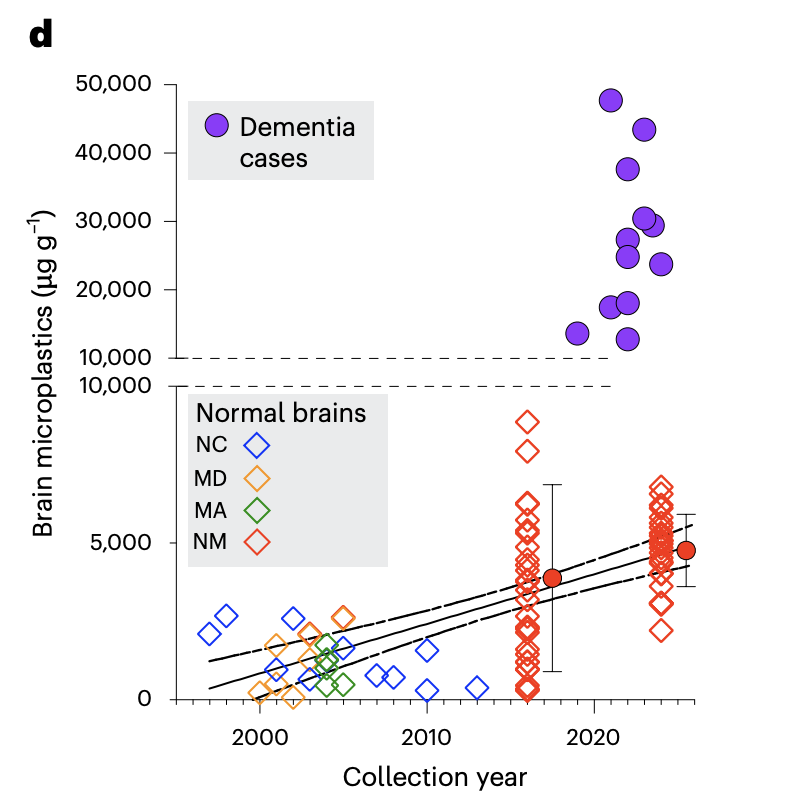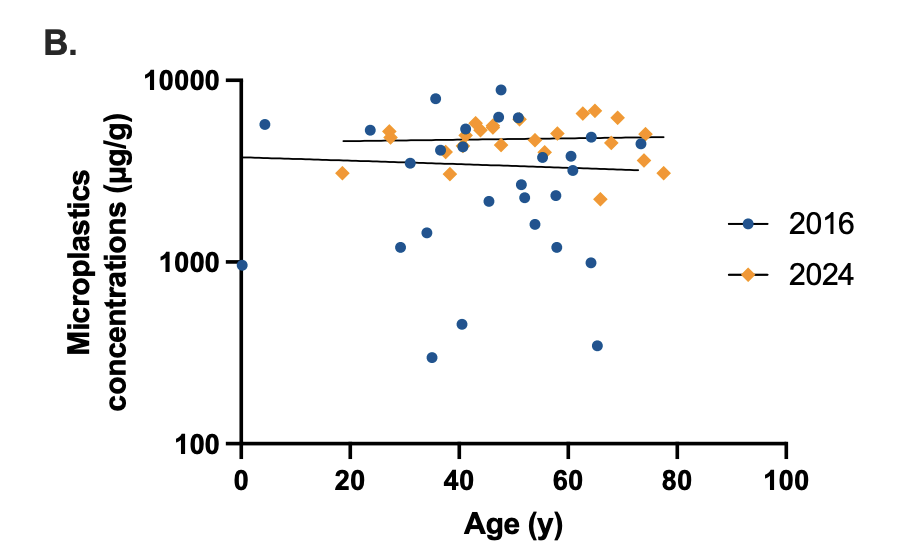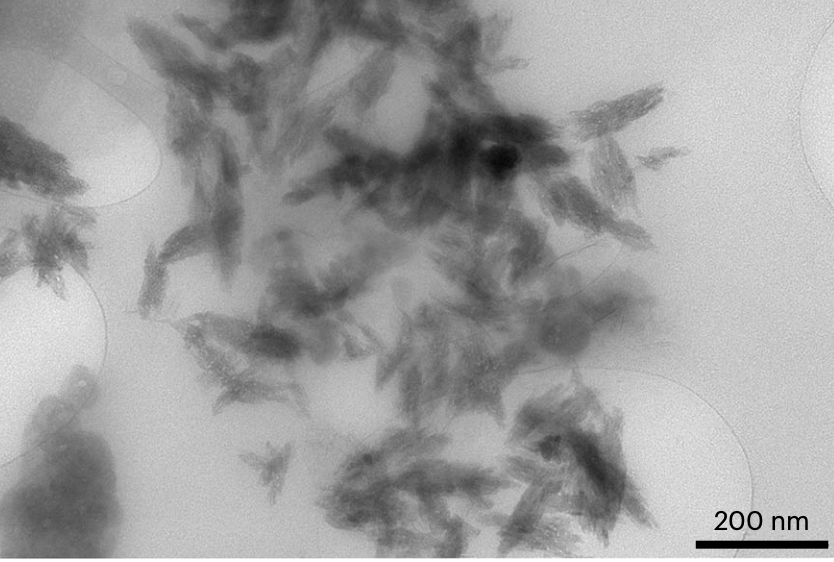Maybe the real story is the microscopic sample size??

Suppose you're designing a clinical trial to determine whether people from Inner Mongolia are better or worse swimmers than those from Outer Mongolia.
Here's your protocol: Throw 24 people from each region into the Baltic Sea for an hour. Afterward, fish out whoever’s still alive, count the bodies, and crunch the numbers.
Result: 6 Inner Mongolians drowned, while only 4 Outer Mongolians did.
Conclusion: Inner Mongolians are 50% more likely to drown. Case closed.
Not so fast. Let's look at the composition of the two groups.
- The Inner Mongolian cohort contains eight poor swimmers, eight average swimmers, and eight good swimmers.
- The Outer Mongolian cohort contains six poor swimmers, 10 average swimmers, and eight good swimmers. This information was not mentioned in the body of the paper. Is this a fair comparison?
- No
What can this possibly have to do with microplastics?
More than you’d think. Because this exact kind of mismatch—more poor swimmers in one group—is called selection bias [1]. And it’s the Achilles heel of retrospective studies [2]. In the absence of closely matched groups, the result becomes unreliable, perhaps worthless.
Based on the background characteristics of the made-up study above, do you think the groups were evenly matched? No, they're not. The Inner Mongolian cohort had more poor swimmers who are (duh) more likely to drown.
Unfortunately, the study behind the headlines, "Bioaccumulation of microplastics in decedent human brains," which was published in a recent Nature Medicine, has an important confounder, so much so that author's conclusion that there was a 50% increase in microplastics in human brains between 2016 and 2024 should be taken with a grain of polyethylene.
Was this hidden?
That's impossible to say, but to spot the bias, one has to search through the 42-page Supplemental Information section, something that is as likely to be read as a two-year-old Pennysaver. (And this is on top of a 16-page paper.) The following figures, which are found on pages 3-4, tell us what's really going on.

Table S1 is where the bias shows up. The first data column shows the sample from the 2016 measurement. (NM OMI means New Mexico Office of the Medical Examiner. There were 28 brains analyzed. Of a total of 28, none were brains with AD. But in 2024, the brains that were studied consisted of 24 without a diagnosis of AD, plus 12 with AD.
Why does this matter?
It matters plenty. And here is where the Mongolian Swimmers analogy comes into play. Figure 1d tells us why.

Figure 1d (in the paper) makes it blatantly obvious why the analogy to the Mongolian swimmers is on target. In 2016, no brains from people with AD were studied. But, in 2024, 12 of the 36 brains were from AD victims, and it is crystal clear where the bias comes from. Without exception, the brains from AD patients contain much more (5-10 times) plastic (more on this later) than those without AD.
The blue dots represent the "bad swimmers." It becomes clear that the inclusion of AD brains is responsible for the so-called 50% increase over 8 years. All of it? Maybe. Supplement Figure 1b shows that when the AD brains are not included, a very different result arises: There is no statistically significant (p = 0.36) difference between the two groups.

Supplemental Figure 1b: When AD brains are omitted from the analysis, the so-called 50% increase vanishes. This speaks volumes.
Strengths of the study
Despite the introduction of a huge confounder, this study is both well-done and important. The following illustrates some of the highlights:
- The group used a previously verified method at Oklahoma State called Pyrolysis–Gas Chromatography–Mass Spectrometry (Py-GC/MS) to determine the quantity of plastic in organs.
- New Mexico samples were also analyzed at Oklahoma State, which confirmed the measurements.
- The group generated some amazing images that visualize microplastics in tissue. Here's one example

- Most importantly, a crystal clear link between microplastics in the brain and AD was established. Although this cannot prove that microparticles cause AD, the huge difference between the two groups shows that they may very well play a significant part in it. Remember, the presence of a chemical or substance does not speak to its potential harm.
- This alone should cause us to pause and consider whether our use of plastics (way too much IMO) is harming us and how much (if at all). The relationship between plastics and AD is too large to ignore.
Bottom Line
The headline-grabbing “50% increase in brain microplastics” from 2016 to 2024 doesn’t hold water. The 2024 group included 12 Alzheimer’s brains—none in 2016—and those had way more plastic. Once you take them out, the difference between the groups vanishes (p = 0.36) — a classic case of selection bias.
But here’s the thing: the study itself is excellent and important. The methods were rigorous, the measurements independently confirmed, and the analysis was thorough. Most importantly, it showed something important—brains from people with Alzheimer’s had far higher microplastic levels than those without. That finding is real, potentially huge, and absolutely worth paying attention to. The mistake was overselling the increase in the timeline; the real story is the Alzheimer’s link.
No comments:
Post a Comment
Note: Only a member of this blog may post a comment.